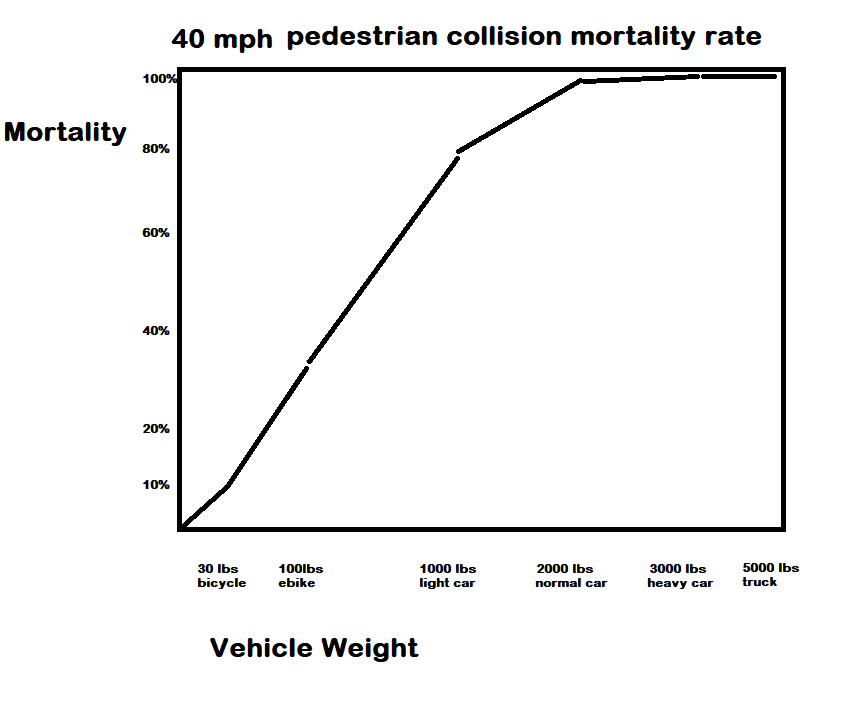
2022 number: 42,795
https://en.wikipedia.org/wiki/Motor_vehicle_fatality_rate_in_U.S._by_year
People are also trading
@xyz yes that's why I think we can get some nice conflict on this market. AI+self-driving believers might expect it to go down, while others would expect the current trend to continue.
@xyz Because unlike regular cars, the weight of a human body isn't enough to stop them down before they kill the person?
@StrayClimb I'm not sure what you mean by "stop them down before they kill the person" but heavier vehicles impart more momentum (p=mv) and because of change in velocity imparted on the person (which will be greater for a greater colliding mass) they experience a larger impulse. That is more injurious.
@xyz So an ICE vehicle weighing 2000 lbs hitting a 100 lb person will slow down at a certain rate. A very low rate since the person's momentum doesn't mean much against 2000 lbs. If the driver doesn't brake the car will basically flatten the person.
if you increase the weight to 3000 lbs it will slow down slightly less. But since the car already is barely slowing down from the impact, it doesn't seem like a big difference.
@StrayClimb It's a real factor.
https://www.axios.com/2023/04/28/evs-weight-safety-problems
But I expect that we will be using different battery tech in 2040, if we're still using battery powered cars.
@xyz i.e. I expect a death rate like this for car pedestrian accidents.
It's not about momentum it's about the ratio & thresholds.
Otherwise, by your argument, a GIGANTIC truck weighing 200 tons would be much more dangerous than a 5 ton mega truck. Yet it seems to me that for both of them, they're insanely dangerous and really can't be distinguished, even though the 200 ton one has 40 times the momentum. It may only have a 0.1% higher mortality rate (since you're already basically dead if you get hit.)
So the question is about where the actual increase in death rates comes. My chart has made up data - but if you believe that the significant increasing part of the curve is between ICE and EV, then you would be right. I'm just guessing here but to me it seems like as a pedestrian you are basically dead even with an ICE car.
Also, if you want to talk about car vs car collisions, the case there is much stronger since the ratio is a lot better for the impacted vehicle, and the EV/ICE weight difference would be more relevant.

@MartinRandall I'd like to see that article with more validation. The parking structure claim is admitted to be invalid later in the article, and the "every 1000 lbs increases risk by 47%" seems hard to apply in reality. Not sure what it really means. They also call out what I've heard as a more significant factor, too - that vehicle shape and height are significant too.
I'm not disagreeing that weight is bad but I'd like to quantify it so we can compare to the other effects of the change around resource use, pollution, etc.
@xyz I think that's what I'd like to evaluate. My point is that in most cases it's not linear, because either you're already dead, or the driver will brake, etc. I would like to know the percent of accidents where contact+momentum is the deciding factor.
@StrayClimb The stats I remember from school is that the fatality rate is 10% at 20mph, 50% at 30mph, and 90% at 40mph. I don't have a citation to hand, but the research is out there.